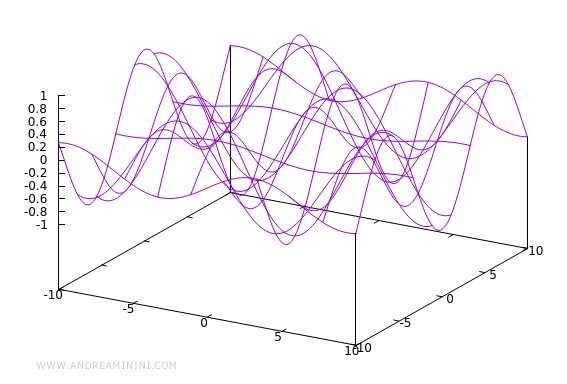 Re-Energy: l’obiettivo è il recupero di energia nelle fasi di frenata e discesa
Re-Energy: l’obiettivo è il recupero di energia nelle fasi di frenata e discesa

Con il progetto Re-Energy, ePowerIng si propone di realizzare uno studio per mettere a punto delle tecniche che permettano il recupero di energia durante le fasi di frenata e discesa dei veicoli ibridi. In particolare, nel corso del progetto verrà sviluppato e implementato un algoritmo che, a partire da misure fornite da un altimetro e da segnali GPS, è in grado di pianificare la gestione energetica della batteria in anticipo, consentendo di massimizzare il successivo recupero energetico.
Tale innovazione, non presente di norma sui veicoli ibridi in commercio, può applicarsi sia ai veicoli ibridi che ibridizzati, risultando di particolare interesse per gli ibridi plug-in, che hanno capacità di immagazzinamento, e quindi di recupero energetico, maggiori. L’implementazione di tali innovazioni, passibili di brevettazione, avrà un impatto significativo su consumi ed emissioni, soprattutto in ambito di guida urbana e di percorsi con variazioni altimetriche.
Come avviene il recupero di energia
La metodologia si basa sull’identificazione della regione di frenatura compresa tra le curve limite di aderenza per le ruote anteriori e posteriori, e sull’individuazione dell’intensità della frenatura meccanica tramite un utilizzo combinato di sensori e della risoluzione real-time dell’equazione della dinamica longitudinale del veicolo, a partire da dati rilevati dalla porta OBD, secondo una metodologia brevettata.
L’algoritmo di controllo da sviluppare individua la modulazione ottimale della frenata, e informa il guidatore con azioni di feedback visivo e sonoro dell’opportunità di variare l’intensità della frenata per massimizzare il recupero energetico. Un secondo algoritmo va, invece, ad incrementare l’energia recuperata nelle fasi di discesa, nei percorsi con variazioni altimetriche.
L’aliquota di energia recuperabile rallentando il veicolo con freni elettrici dipende dalla pendenza e dalla velocità, e può variare da circa 100 Wh/km, per pendenze attorno al 5%, fino a circa 300 Wh/km in caso di pendenze più elevate. In un percorso extra urbano di alcuni chilometri, l’aliquota recuperabile può essere confrontabile con la capacità della batteria. Gli algoritmi previsionali da sviluppare si basano su un utilizzo combinato di un altimetro, di un eventuale sensore GPS e di modelli statistici, con l’obiettivo di stimare il limite superiore dello stato di carica della batteria (SOC) in grado di assicurare il recupero di energia nella successiva fase di discesa.
Re-Energy: risultati
Segue un elenco dei risultati attesi:
- sviluppo ed implementazione dei modelli matematici del veicolo ibrido/ibridizzato;
- sviluppo ed implementazione delle strategie di controllo. Nella fase immediatamente successiva verranno implementati ed integrati con il modello veicolo gli algoritmi per la gestione della frenata rigenerativa e per la previsione della gestione ottimizzata delle fasi di discesa;
- effettuazione dei test in ambiente simulato per un elevato numero di casi di cicli di guida, ed analisi dei risultati. Individueremo test di prova rappresentativi del funzionamento atteso in condizioni urbane ed extra-urbane, anche con occorrenza di variazioni di altitudine. Effettueremo test di simulazione del veicolo lungo tali percorsi, calcolando la riduzione di consumi ed emissioni in presenza dell’algoritmo sviluppato;
- implementazione delle strategie di controllo su sistemi embedded on board. Implementeremo la versione ottimizzata degli algoritmi sui sistemi di controllo veicolo in dotazione degli utilizzatori;
- svolgimento di test su veicolo, in collaborazione con gli stakeholder utilizzatori dell’innovazione;
- validazione dei benefici stimati in fase di simulazione e loro verifica sperimentale, su percorsi misti.
Il progetto è cofinanziato dall’Unione Europea, dallo Stato Italiano e dalla Regione Campania, nell’ambito del POR Campania FESR 2014-2020


With the Re-Energy project, ePowerIng intends to develop techniques that allow the energy recovery during the braking and descent phases of hybrid vehicles. In particular, during the project an algorithm will be developed and implemented which, starting from measurements provided by an altimeter and GPS signals, is able to plan the energy management of the battery in advance, making it possible to maximize subsequent energy recovery.
This innovation, which is not normally present in hybrid vehicles on the market, can be applied to both hybrid and hybridized vehicles, with a particular interest in plug-in hybrids, which have greater energy storage and therefore energy recovery capacities. The implementation of these innovations, subject to patenting, will have a significant impact on consumption and emissions, especially in the context of urban driving and routes with variations in altitude.
How energy recovery occurs
The methodology is based on the identification of the braking region between the adhesion limit curves for the front and rear wheels, and on the identification of the intensity of the mechanical braking through a combined use of sensors and the real-time resolution of the equation of the longitudinal dynamics of the vehicle, starting from data detected by the OBD port, according to a patented methodology.
The control algorithm to be developed identifies the optimal braking modulation, and informs the driver with visual and audible feedback actions of the opportunity to vary the braking intensity to maximize energy recovery.
A second algorithm, on the other hand, increases the energy recovered in the descent phases, in routes with altimetric variations.
The amount of energy that can be recovered by slowing down the vehicle with electric brakes depends on the slope and speed, and can vary from around 100 Wh/km, for slopes of around 5%, up to around 300 Wh/km in the case of steeper slopes. In a non-urban journey of a few kilometers, the recoverable rate can be comparable with the battery capacity. The forecasting algorithms to be developed are based on a combined use of an altimeter, a GPS sensor and statistical models, with the aim of estimating the upper limit of the battery state of charge (SOC) capable of ensuring the recovery of energy in the subsequent descent phase.
Re-Energy: results
Below is a list of expected results:
- development and implementation of mathematical models of the hybrid/hybridised vehicle;
- development and implementation of control strategies; in the following phase, the algorithms for the management of the regenerative braking and for the prediction of the optimized management of the descent phases will be implemented and integrated with the vehicle model;
- carrying out tests in a simulated environment for a large number of driving cycle cases, and analyzing the results. We will identify test runs representative of the expected operation in urban and extra-urban conditions, even with the occurrence of altitude variations. We will carry out vehicle simulation tests along these routes, calculating the reduction in fuel consumption and emissions in the presence of the developed algorithm;
- implementation of control strategies on embedded systems on board. We will implement the optimized version of the algorithms on the vehicle control systems supplied by the users;
- carrying out vehicle tests, in collaboration with the stakeholders using the innovation;
- validation of the benefits estimated in the simulation phase and their experimental verification, on mixed paths.
The project is co-financed by the European Union, the Italian State and the Campania Region, as part of the POR Campania FESR 2014-2020


